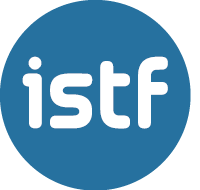What Is STEM Education?
STEM education promotes the integration and development of scientific and technical subjects in a single interdisciplinary framework. It advocates for a didactic approach that aims to ensure the transversality of the learning process through disciplines that are considered essential for the integral development of individuals in today’s local and global contexts, including Science, Technology, Engineering, and Mathematics.
ISTF, January 12, 2023

The Importance of STEM Methodology
STEM education’s pedagogical approach encourages critical thinking, creativity, innovation, collaboration, and teamwork. This favors the development of a student profile that is flexible, determined, and motivated that allows the student to apply their learning to new situations and relevant contexts.
Active methodologies provide students with the set of skills necessary to apply the knowledge and tools they have learned in class to their daily lives. These methodologies help students reflect on what has been learned through this interactive and multidirectional process.
The International Science Teaching Foundation (ISTF), which aims to promote research in the field of scientific and technological education, strongly believes that the 5E Model of Instruction by the Biological Sciences Curriculum Study (BSCS) is the best framework to address the challenges posed by STEM education. Using quality content designed around the most effective learning models, the adoption of this model in the classroom ensures learning that is lasting, transferable, and practical.
The Future Is STEM Education
In contrast with more traditional approaches, STEM education aims to provide instructional environments for blended learning and is committed to showing students how the scientific method can be applied in an everyday context. Indeed, STEM education focuses on the practical applications of problem-solving in the real world.
This approach has a clear advantage in shaping students’ future careers: currently, STEM career profiles are among the most sought after by companies due to their alignment with technological advancements in society.
On a global scale, the eleven countries with the highest number of STEM career graduates in 2020 were also some of the world’s strongest or fastest-growing economies: China (3.57 million graduates), India (2.55 million), the United States (820,000), Russia (520,000), Indonesia (300,000). Brazil (238,000), Mexico (221,000), France (220,000), Germany (216,000), Iran (211,000), and Japan (192,000).

Science Bits and Math Bits: Your Best Allies for STEM Education
The Science Bits and Math Bits educational projects are designed based on research in science and math education, as well as cognitive psychology on how people learn.
The goal of Science Bits and Math Bits is to provide teachers with resources and tools to promote high-quality science and math education, fostering student motivation and deep learning.
Do you want to join the STEM revolution?
Discover these two educational projects, backed by scientific evidence and supported by the ISTF.
References:
- Oliss B., McFaul, C. & Riddick J.C. (2023, November 23th). The Global Distribution of STEM Graduates: Which Countries Lead the Way? CSET: Center for Security and Emerging Technology.
- International Labour Organization (ILO)
- Organisation for Economic Co-operation and Development (OECD)
- The Importance of STEM Careers to Make a Better Future for Our Society
- The Cognitive Principles of Learning Underlying the 5E Model of Instruction

The International Science Teaching Foundation (ISTF) is a non-profit organization committed to improving STEM education, headquartered in London and Barcelona. The ISTF is formed by more than 30 scientists, educators and experts who work tirelessly to improve science teaching worldwide. Its mission is to foster an international community of STEM educators with an active dedication and commitment.
















Leave a Reply